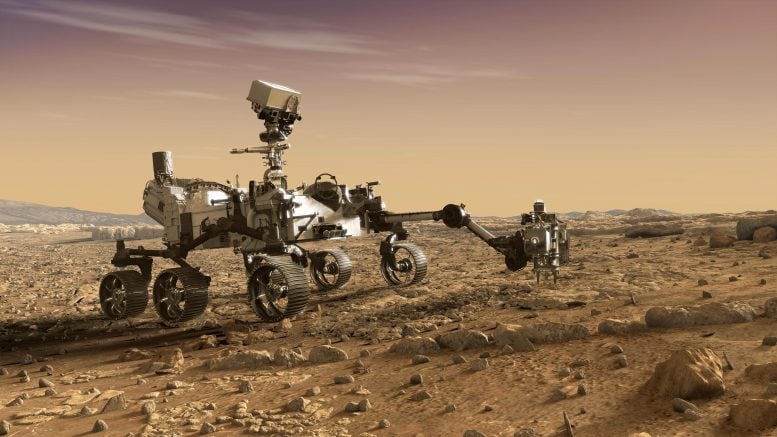
This illustration depicts NASA’s Mars 2020 rover studying rocks with its robotic arm. Credit: NASA/JPL-Caltech
What does Percy do all day? A Martian day- or Sol- is 24 hours and 37 minutes long, and while every Sol is different, each one is packed full of exciting science activities, observations, and discoveries! Let’s follow Percy on Sol 345 (February 8th, 2022) to catch a glimpse into the daily life of a Martian explorer.
Percy woke up early in the morning at 02:07 LMST (Local Mean Solar Time on Mars) to conduct a data management activity for an onboard instrument called MEDA (Mars Environmental Dynamics Analyzer), which uses a suite of sensors to monitor weather throughout the Sol. After a short nap, it was time to wake up again and send data from the previous Sol’s observations down to scientists on Earth via Mars orbiters and the Deep Space Network (DSN). Mars is circled by several orbiting satellites that relay information between the rover and mission control: each Sol’s plan with commands for every activity is uplinked from Earth to Mars once in the morning, while images and information collected by rover instruments are downlinked from Mars to Earth multiple times throughout the day and night.
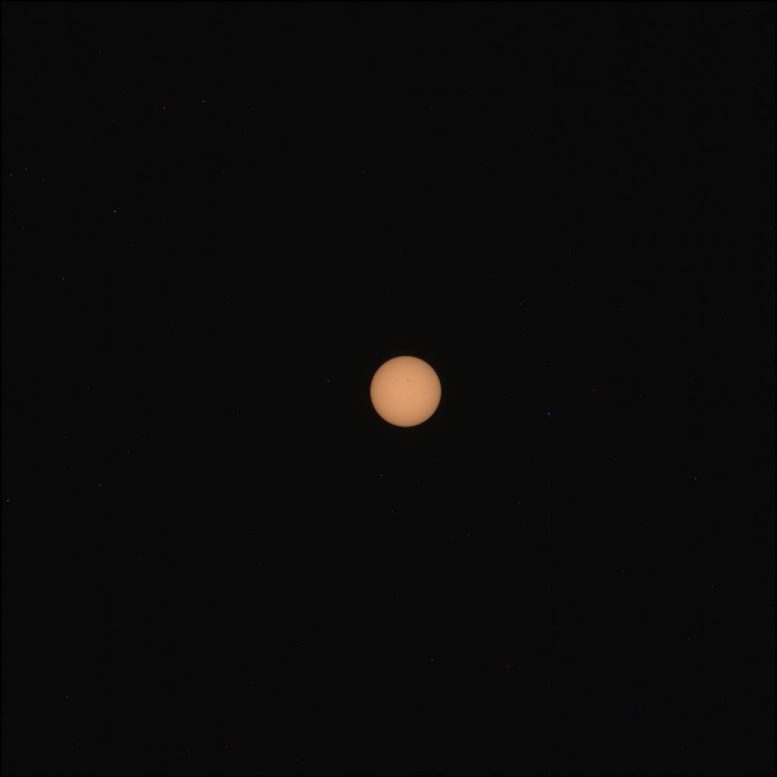
A Morning Atmospheric Science Observation on Sol 345: This image of the Sun was taken by Perseverance’s Mastcam-Z. This type of observation is called a “basic tau” and is used to help characterize the atmosphere. Credit: NASA/JPL-Caltech/ASU
The sun rose at 05:16, and the rover conducted a series of daily engineering activities to send more data to Earth, manage power, and check out various instruments until the Sol 345 plan was uplinked from mission control and received around 11:00. At 11:37, Percy used Mastcam-Z to take a “basic tau” aimed skyward towards the Sun, with the goal of measuring atmospheric optical density. At 11:50, Ingenuity took off for its 19th flight on Mars, photographing Séítah from above.
While the helicopter was flying over Séítah, Percy used SuperCam, Mastcam-Z, and WATSON (Wide Angle Topographic Sensor for Operations and eNgineering) to observe four nearby rock targets called Vergons, Galabre, Montpezat, and Tragastel. First, SuperCam used its laser to simultaneously gather information about the minerals contained in these rocks and clear away dust from the surfaces. Next, Mastcam-Z took some 3d stereo images documenting the targets. These two activities began at 12:09 and took about 1 hour and 45 minutes. Finally, the rover’s robotic arm was deployed at 13:54 so that the arm-mounted WATSON could get up close and personal to capture images in fine detail, from just a few centimeters away. Afterward, WATSON was turned off and the arm re-stowed. One of these targets would be selected for an abrasion activity in the next Sol, and the observations gathered by the three instruments provided key information to help the scientists and engineers choose the best one- which ended up being Montepezat!
From 16:10- 16:33 in the late afternoon, Percy took some atmospheric measurements, including another Mastcam-Z “basic tau” and a skyward Navcam image to look for clouds. Sunset was at 17:26, and the evening was filled with more data transfers over the DSN and an engineering activity to test out some new maneuvers for the ACA (Adaptive Caching Assembly), which is the part of the rover that stores cores after they are drilled. Finally, Percy went to sleep just before 21:00, tired out after another long yet exciting Sol on Mars!
Written by Denise Buckner, Student Collaborator at the University of Florida.



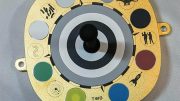

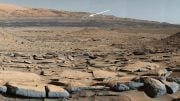


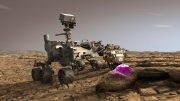
Be the first to comment on "NASA Mars Perseverance: A Sol in the Life of a Rover"